 There's just something about a band that creates their own instrumentsto make the message they commit to tape. They thumb their nose atconventional instrumentation, striving for a higher statement of being,demanding more struggle for themselves before composing their work.Once they've made sounds with that new instrument, though, the resultoften doesn't produce anything resembling a great leap forward, and canget mired in its own imperfection. Unfortunately, that is the case withClang Quartet, whose new album had so much promise. The title, a switchon a familiar phrase, becomes funny but incredibly appropriateconsidering that so much hate is generated by differing religions andthose that follow them. Cover art drives the point home even moreeffectively, as what appears to be swastikas mixed with crucifixesjumble together until indistinguishable from each other. The keyproblem with The Separationis that the power of this concept is belittled by the sounds inside,and therefore the message, though admirable and necessary, isirrevocably lost. The sound of this record is not only generallyunappealing, but in areas almost unlistenable. Scotty Irving, who isthe Clang Quartet, believes the line between sound and music to beinvalid, and it shows. He loves percussion, so most songs arestructured as purely beat driven with an unaltering melody. The openingtrack, appropriately titled "Amazing Disgrace," is monotonous andultimately just gains volume and distortion, plus a few keyboard-likesounds that may or may not be "The Crutch" (Irving's new and originalbut ugly instrument). Loud angry drums that appear towards the end addmore flavor and still more volume, but the overall effect is stillstatic and annoying. "Under God" feature squelches and buzzes instead,effects that burble and bleep, but grate above all else. "The InfidelWithin" has wild tracks, commentary, and a bit of sermonizing fromIrving, all dealing with the infamous Proctor & Gamble Church ofSatan argument. The track is wholly uninteresting, although it isimpartial, and this time it's Irving himself that is the annoying part.When it isn't percussive nonsense driving the tracks, it's his voice("Hadephobia") or message, which apparently involves increasedself-promotion ("Two or More Gathered in HIS Name Part 2"). Hisrepeated assertion that he does not create "music" is supported quitewell by these songs, but it's infortunate that he does have amessage worth delivering. The fact that it's not comfortably delivered,or even coherently for that matter, does it a great disservice. Evenwhere he drives the message home lightly, it's like nails on achalkboard. Messages like his are never easy to listen to, but ClangQuartet go an awful distance to make it more uncomfortable than itneeds to be, and thus the message goes unheard or gets misunderstood inthe final analysis.
There's just something about a band that creates their own instrumentsto make the message they commit to tape. They thumb their nose atconventional instrumentation, striving for a higher statement of being,demanding more struggle for themselves before composing their work.Once they've made sounds with that new instrument, though, the resultoften doesn't produce anything resembling a great leap forward, and canget mired in its own imperfection. Unfortunately, that is the case withClang Quartet, whose new album had so much promise. The title, a switchon a familiar phrase, becomes funny but incredibly appropriateconsidering that so much hate is generated by differing religions andthose that follow them. Cover art drives the point home even moreeffectively, as what appears to be swastikas mixed with crucifixesjumble together until indistinguishable from each other. The keyproblem with The Separationis that the power of this concept is belittled by the sounds inside,and therefore the message, though admirable and necessary, isirrevocably lost. The sound of this record is not only generallyunappealing, but in areas almost unlistenable. Scotty Irving, who isthe Clang Quartet, believes the line between sound and music to beinvalid, and it shows. He loves percussion, so most songs arestructured as purely beat driven with an unaltering melody. The openingtrack, appropriately titled "Amazing Disgrace," is monotonous andultimately just gains volume and distortion, plus a few keyboard-likesounds that may or may not be "The Crutch" (Irving's new and originalbut ugly instrument). Loud angry drums that appear towards the end addmore flavor and still more volume, but the overall effect is stillstatic and annoying. "Under God" feature squelches and buzzes instead,effects that burble and bleep, but grate above all else. "The InfidelWithin" has wild tracks, commentary, and a bit of sermonizing fromIrving, all dealing with the infamous Proctor & Gamble Church ofSatan argument. The track is wholly uninteresting, although it isimpartial, and this time it's Irving himself that is the annoying part.When it isn't percussive nonsense driving the tracks, it's his voice("Hadephobia") or message, which apparently involves increasedself-promotion ("Two or More Gathered in HIS Name Part 2"). Hisrepeated assertion that he does not create "music" is supported quitewell by these songs, but it's infortunate that he does have amessage worth delivering. The fact that it's not comfortably delivered,or even coherently for that matter, does it a great disservice. Evenwhere he drives the message home lightly, it's like nails on achalkboard. Messages like his are never easy to listen to, but ClangQuartet go an awful distance to make it more uncomfortable than itneeds to be, and thus the message goes unheard or gets misunderstood inthe final analysis.  There's just something about a band that creates their own instrumentsto make the message they commit to tape. They thumb their nose atconventional instrumentation, striving for a higher statement of being,demanding more struggle for themselves before composing their work.Once they've made sounds with that new instrument, though, the resultoften doesn't produce anything resembling a great leap forward, and canget mired in its own imperfection. Unfortunately, that is the case withClang Quartet, whose new album had so much promise. The title, a switchon a familiar phrase, becomes funny but incredibly appropriateconsidering that so much hate is generated by differing religions andthose that follow them. Cover art drives the point home even moreeffectively, as what appears to be swastikas mixed with crucifixesjumble together until indistinguishable from each other. The keyproblem with The Separationis that the power of this concept is belittled by the sounds inside,and therefore the message, though admirable and necessary, isirrevocably lost. The sound of this record is not only generallyunappealing, but in areas almost unlistenable. Scotty Irving, who isthe Clang Quartet, believes the line between sound and music to beinvalid, and it shows. He loves percussion, so most songs arestructured as purely beat driven with an unaltering melody. The openingtrack, appropriately titled "Amazing Disgrace," is monotonous andultimately just gains volume and distortion, plus a few keyboard-likesounds that may or may not be "The Crutch" (Irving's new and originalbut ugly instrument). Loud angry drums that appear towards the end addmore flavor and still more volume, but the overall effect is stillstatic and annoying. "Under God" feature squelches and buzzes instead,effects that burble and bleep, but grate above all else. "The InfidelWithin" has wild tracks, commentary, and a bit of sermonizing fromIrving, all dealing with the infamous Proctor & Gamble Church ofSatan argument. The track is wholly uninteresting, although it isimpartial, and this time it's Irving himself that is the annoying part.When it isn't percussive nonsense driving the tracks, it's his voice("Hadephobia") or message, which apparently involves increasedself-promotion ("Two or More Gathered in HIS Name Part 2"). Hisrepeated assertion that he does not create "music" is supported quitewell by these songs, but it's infortunate that he does have amessage worth delivering. The fact that it's not comfortably delivered,or even coherently for that matter, does it a great disservice. Evenwhere he drives the message home lightly, it's like nails on achalkboard. Messages like his are never easy to listen to, but ClangQuartet go an awful distance to make it more uncomfortable than itneeds to be, and thus the message goes unheard or gets misunderstood inthe final analysis.
There's just something about a band that creates their own instrumentsto make the message they commit to tape. They thumb their nose atconventional instrumentation, striving for a higher statement of being,demanding more struggle for themselves before composing their work.Once they've made sounds with that new instrument, though, the resultoften doesn't produce anything resembling a great leap forward, and canget mired in its own imperfection. Unfortunately, that is the case withClang Quartet, whose new album had so much promise. The title, a switchon a familiar phrase, becomes funny but incredibly appropriateconsidering that so much hate is generated by differing religions andthose that follow them. Cover art drives the point home even moreeffectively, as what appears to be swastikas mixed with crucifixesjumble together until indistinguishable from each other. The keyproblem with The Separationis that the power of this concept is belittled by the sounds inside,and therefore the message, though admirable and necessary, isirrevocably lost. The sound of this record is not only generallyunappealing, but in areas almost unlistenable. Scotty Irving, who isthe Clang Quartet, believes the line between sound and music to beinvalid, and it shows. He loves percussion, so most songs arestructured as purely beat driven with an unaltering melody. The openingtrack, appropriately titled "Amazing Disgrace," is monotonous andultimately just gains volume and distortion, plus a few keyboard-likesounds that may or may not be "The Crutch" (Irving's new and originalbut ugly instrument). Loud angry drums that appear towards the end addmore flavor and still more volume, but the overall effect is stillstatic and annoying. "Under God" feature squelches and buzzes instead,effects that burble and bleep, but grate above all else. "The InfidelWithin" has wild tracks, commentary, and a bit of sermonizing fromIrving, all dealing with the infamous Proctor & Gamble Church ofSatan argument. The track is wholly uninteresting, although it isimpartial, and this time it's Irving himself that is the annoying part.When it isn't percussive nonsense driving the tracks, it's his voice("Hadephobia") or message, which apparently involves increasedself-promotion ("Two or More Gathered in HIS Name Part 2"). Hisrepeated assertion that he does not create "music" is supported quitewell by these songs, but it's infortunate that he does have amessage worth delivering. The fact that it's not comfortably delivered,or even coherently for that matter, does it a great disservice. Evenwhere he drives the message home lightly, it's like nails on achalkboard. Messages like his are never easy to listen to, but ClangQuartet go an awful distance to make it more uncomfortable than itneeds to be, and thus the message goes unheard or gets misunderstood inthe final analysis. 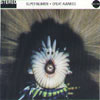 Hailing from Liverpool (the city best known for it's ship yards andother musical exports), Super Numeri are a communal musical collectivethat re-create the spacey and organic sounds of mid-70s fusion andupdate it with instrumentation that doesn't seem to be too far of astretch by today's standards. Based around a core of three members, anextra ten musicians augment their compositions with a plethora ofsounds throughout the eight earthy tracks that make up their Great Aviariesdisc. Opening with what is easily an homage to the man known to be theinventor of fusion, Miles Davis, "The Electric Horse Garden" ebbs andflows with sitar drones and organ swells while the presence of relaxedbass and drums support the pretty and expressive jazzy guitar layeringswithout getting totally psychedelic. "Otter's Poll" adds live harppluckings to the free form mix of low-end synth drones, loose drummingand glockenspiel topped off with a lush string section. The odd-timesignature and choppy syncopation of "Beaks" meshes with singled-noteddirty guitar and bass playing off the beat while noise guitar andelectronic whirls ensue. The reggae-styled groove of "Classic BritishPonds" is touched up with some subtle Brazilian tambourine playing fora vibraphone-padded track peppered with treated guitar sounds.Unfortunately, the gradual building of this track takes away from itshypnotic effect and points out out that there's only been one groovegoing all along. For the most part, Super Numeri cohesively stretch outtheir musical ideas around some simple yet interesting motifs, ratherthan taking the more self-indulgent jam-band approach. The disc's titleisn't very far off the mark as there is a lot of vibrant beauty to befound throughout each individual track.
Hailing from Liverpool (the city best known for it's ship yards andother musical exports), Super Numeri are a communal musical collectivethat re-create the spacey and organic sounds of mid-70s fusion andupdate it with instrumentation that doesn't seem to be too far of astretch by today's standards. Based around a core of three members, anextra ten musicians augment their compositions with a plethora ofsounds throughout the eight earthy tracks that make up their Great Aviariesdisc. Opening with what is easily an homage to the man known to be theinventor of fusion, Miles Davis, "The Electric Horse Garden" ebbs andflows with sitar drones and organ swells while the presence of relaxedbass and drums support the pretty and expressive jazzy guitar layeringswithout getting totally psychedelic. "Otter's Poll" adds live harppluckings to the free form mix of low-end synth drones, loose drummingand glockenspiel topped off with a lush string section. The odd-timesignature and choppy syncopation of "Beaks" meshes with singled-noteddirty guitar and bass playing off the beat while noise guitar andelectronic whirls ensue. The reggae-styled groove of "Classic BritishPonds" is touched up with some subtle Brazilian tambourine playing fora vibraphone-padded track peppered with treated guitar sounds.Unfortunately, the gradual building of this track takes away from itshypnotic effect and points out out that there's only been one groovegoing all along. For the most part, Super Numeri cohesively stretch outtheir musical ideas around some simple yet interesting motifs, ratherthan taking the more self-indulgent jam-band approach. The disc's titleisn't very far off the mark as there is a lot of vibrant beauty to befound throughout each individual track. 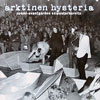 This is a thoroughly energizing collection of 60s Finnish bizarrenessthat has several gems on it and serves as an excellent introduction tothe early Finnish scene. Kurenniemi pops up several times. His DIMAsynth appears on Jukka Ruohomäki's "What Time Is," a blues tunereminding me a bit of Martin Rev's electro doo-wop. The Sähkökvartettisynth is played by a band of the same name in a fabulous liveperformance that sounds uncannily like Pan Sonic in parts complete withwailing voice controlled tones, automaton electronic beats and lashingsof distortion and feedback. His own performance on the Andromaticsynth, Antropoidien Tanssi, is a demented rhythmic atonal assembly ofprimitive electronic sounds. The relatively mainstream band BluesSection contributes their "B-side Shivers of Pleasure," combininggroovy garage rock with tape effects and outlandish collectiveextemporization. Then there's a blazing sax/drums free improv with atotally over the top amplified sax sound from Jouni Kesti and Seppo I.Lane. The Sperm make two showings: band leader Pekka Airaksinen'sbrooding repetitive tape loop guitar work features in "3rd Erection"while the band's exuberant confrontational live performance is shownoff in the excerpts from their opera "Garden of Death" (a photo of aperformance of which graces the cover). With slightly disconnectedguitar, organ, sax, pummeling drums and wailing vocals it has thecreative energy of the Mothers of Invention or Sun Ra. Among some otherthings, there's a blues burp fest, a very strange vote countingexercise in which the name of Finnish president Urho Kekkonen isrepeated in a disconcerting melody, and an "aleatoric assault againstSpiro Agnew by an academic philosopher."
This is a thoroughly energizing collection of 60s Finnish bizarrenessthat has several gems on it and serves as an excellent introduction tothe early Finnish scene. Kurenniemi pops up several times. His DIMAsynth appears on Jukka Ruohomäki's "What Time Is," a blues tunereminding me a bit of Martin Rev's electro doo-wop. The Sähkökvartettisynth is played by a band of the same name in a fabulous liveperformance that sounds uncannily like Pan Sonic in parts complete withwailing voice controlled tones, automaton electronic beats and lashingsof distortion and feedback. His own performance on the Andromaticsynth, Antropoidien Tanssi, is a demented rhythmic atonal assembly ofprimitive electronic sounds. The relatively mainstream band BluesSection contributes their "B-side Shivers of Pleasure," combininggroovy garage rock with tape effects and outlandish collectiveextemporization. Then there's a blazing sax/drums free improv with atotally over the top amplified sax sound from Jouni Kesti and Seppo I.Lane. The Sperm make two showings: band leader Pekka Airaksinen'sbrooding repetitive tape loop guitar work features in "3rd Erection"while the band's exuberant confrontational live performance is shownoff in the excerpts from their opera "Garden of Death" (a photo of aperformance of which graces the cover). With slightly disconnectedguitar, organ, sax, pummeling drums and wailing vocals it has thecreative energy of the Mothers of Invention or Sun Ra. Among some otherthings, there's a blues burp fest, a very strange vote countingexercise in which the name of Finnish president Urho Kekkonen isrepeated in a disconcerting melody, and an "aleatoric assault againstSpiro Agnew by an academic philosopher."- Säkökvartetti - Kaukana Väijyy Ystäviä
- Blues Section - Shivers of Pleasure
- The Sperm - 3rd Erection
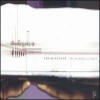 After two 12" EP's and a bunch of compilation tracks, it is gratifyingfinally to have a proper full-length from Lexaunculpt. "The Turning ofa Miniature Modem" begins the album with the sounds of an orchestratuning, which is an aptly chosen prologue since "orchestral" is an aptterm to describe Alex Graham's music. There always seems to be thishovering chamber orchestra in Lexaunculpt tracks, a rippling softnessand smoothness which vies against the foreground of clicks and glitchesand fizzles. More so than other glitch artists, Lexaunculpt makes songswhich are quite amenable as hip hop beats without actually employingsamples of extant hip hop beats. In other words, some of these songswould be an earnest emcee's wet dream. Following the introductorytuning session, "Has Been Trying Not To Wonder" undergoes a slickmetamorphosis halfway through when bubbling energetic clicks degradeinto a rhythmic synthesized insect orchestra. If this does not soundlike an enjoyable metamorphosis, trust me that it is lovely andrevealing. "A Funeral For a Pink Elephant Ear" is a nearly non-existenttrack which compels you to strain all parts of your auditory systemjust to sense if anything is happening or whether Mr. Graham hastricked us with two minutes of John Cage's copyrighted silence."Strangelove Offline" sounds less like a babbling and demented PeterSellers than it does a malfunctioning and demented Twiki robot fromBuck Rogers. Lexaunculpt waits until the very end to deliver the gem ofthe album. "Emori Dixon Renamed" is a synth-heavy song loaded withstatic which suggests that Graham's Blurring of Treestransmission is breaking up and about to dissipate. There are even somediminutive vocals trying to break through the static, or perhapsinvading from some other ghost signal. In general, I am more oftenengaged by the thick synth songs (there are a group of these whichcomprise full songs or sometimes parts of songs; they sound amazinglyorchestral and celestial at the same time) because they make me bristlewhen I hear them. For this reason, I have always wanted to score themto that part in the first Superman movie when Marlon Brando as Jor-Elis waging his closing arguments against Terence Stamp's General Zod inthat infamous treason case. When I see Zod and his two mutinouscomrades (Non and Vond-Ah) encircled by the silver hula hoops(Krypton's advanced technology for a jail cell) and the faces of theKryptonian elders all around enshrouded in darkness, I really want tobe hearing Lexaunculpt's soaring "Le Elancholia" and not whateverthrowaway piece John Williams contributed, or even the disinterestedvoice of the prosecutorial Marlon Brando. Come to think of it,Lexaunculpt would make an eerily good soundtrack for any escape podtrip from Krypton to Earth, as well.
After two 12" EP's and a bunch of compilation tracks, it is gratifyingfinally to have a proper full-length from Lexaunculpt. "The Turning ofa Miniature Modem" begins the album with the sounds of an orchestratuning, which is an aptly chosen prologue since "orchestral" is an aptterm to describe Alex Graham's music. There always seems to be thishovering chamber orchestra in Lexaunculpt tracks, a rippling softnessand smoothness which vies against the foreground of clicks and glitchesand fizzles. More so than other glitch artists, Lexaunculpt makes songswhich are quite amenable as hip hop beats without actually employingsamples of extant hip hop beats. In other words, some of these songswould be an earnest emcee's wet dream. Following the introductorytuning session, "Has Been Trying Not To Wonder" undergoes a slickmetamorphosis halfway through when bubbling energetic clicks degradeinto a rhythmic synthesized insect orchestra. If this does not soundlike an enjoyable metamorphosis, trust me that it is lovely andrevealing. "A Funeral For a Pink Elephant Ear" is a nearly non-existenttrack which compels you to strain all parts of your auditory systemjust to sense if anything is happening or whether Mr. Graham hastricked us with two minutes of John Cage's copyrighted silence."Strangelove Offline" sounds less like a babbling and demented PeterSellers than it does a malfunctioning and demented Twiki robot fromBuck Rogers. Lexaunculpt waits until the very end to deliver the gem ofthe album. "Emori Dixon Renamed" is a synth-heavy song loaded withstatic which suggests that Graham's Blurring of Treestransmission is breaking up and about to dissipate. There are even somediminutive vocals trying to break through the static, or perhapsinvading from some other ghost signal. In general, I am more oftenengaged by the thick synth songs (there are a group of these whichcomprise full songs or sometimes parts of songs; they sound amazinglyorchestral and celestial at the same time) because they make me bristlewhen I hear them. For this reason, I have always wanted to score themto that part in the first Superman movie when Marlon Brando as Jor-Elis waging his closing arguments against Terence Stamp's General Zod inthat infamous treason case. When I see Zod and his two mutinouscomrades (Non and Vond-Ah) encircled by the silver hula hoops(Krypton's advanced technology for a jail cell) and the faces of theKryptonian elders all around enshrouded in darkness, I really want tobe hearing Lexaunculpt's soaring "Le Elancholia" and not whateverthrowaway piece John Williams contributed, or even the disinterestedvoice of the prosecutorial Marlon Brando. Come to think of it,Lexaunculpt would make an eerily good soundtrack for any escape podtrip from Krypton to Earth, as well.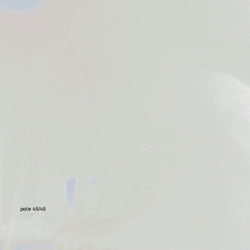 With the three albums under the Pole moniker, Stefan Betke became a dubpioneer with his broken Waldorf 4-pole filter unit. The digitizedgrooves of the Basic Channel set achieved far more exposure withBetke's well-distributed albums. For a time, it became the hottestsound in the IDM genre, with labels like Mille Plateaux pumping outnumerous releases from a plethora of artists. However, it was not longbefore somewhat-related glitch/clicks and cuts became the next trend.Still, Betke persevered with his ~scape label, giving a forum for otherartists with a similar vision (such as Jan Jelinek, Kit Clayton, andBernd Friedman), particularly with the popular Staeditizm compilationseries. After listening to this new EP, some of his peers haveapparently rubbed off on him. Starting with "Arena," a new percussiveelement has entered into the mix, creating something more similar totraditional dub music. The deep stabs that made up Pole melodies take abackseat to the funkier grooves, with mixed results over the course ofthese four songs. Pole's formerly ascetic, purist style was whatendeared me to his music in the first place. The stripped-down natureof his 1album portrayed a focused artist pushing a defective machine beyond itsexpected potential to create something beautiful and innovative. Bymoving into more accessible areas, Pole dangerously threatens his ownrelevance among the glut of experimental music releases. It would beremiss of me to play the "his older stuff is better" card withoutgiving him proper credit for creating something that while different isstill enjoyable. Particularly, the closer, "Back Home," has a certainjazzy quality that would almost fit on a Kruder & Dorfmeister mixCD, but transcends the recent output of the G-Stone family as of late.So to be fair, I will wait to pass judgement until the new albumemerges in July. Then again, I'm just a music reviewer for a website.Think for your own fucking self.
With the three albums under the Pole moniker, Stefan Betke became a dubpioneer with his broken Waldorf 4-pole filter unit. The digitizedgrooves of the Basic Channel set achieved far more exposure withBetke's well-distributed albums. For a time, it became the hottestsound in the IDM genre, with labels like Mille Plateaux pumping outnumerous releases from a plethora of artists. However, it was not longbefore somewhat-related glitch/clicks and cuts became the next trend.Still, Betke persevered with his ~scape label, giving a forum for otherartists with a similar vision (such as Jan Jelinek, Kit Clayton, andBernd Friedman), particularly with the popular Staeditizm compilationseries. After listening to this new EP, some of his peers haveapparently rubbed off on him. Starting with "Arena," a new percussiveelement has entered into the mix, creating something more similar totraditional dub music. The deep stabs that made up Pole melodies take abackseat to the funkier grooves, with mixed results over the course ofthese four songs. Pole's formerly ascetic, purist style was whatendeared me to his music in the first place. The stripped-down natureof his 1album portrayed a focused artist pushing a defective machine beyond itsexpected potential to create something beautiful and innovative. Bymoving into more accessible areas, Pole dangerously threatens his ownrelevance among the glut of experimental music releases. It would beremiss of me to play the "his older stuff is better" card withoutgiving him proper credit for creating something that while different isstill enjoyable. Particularly, the closer, "Back Home," has a certainjazzy quality that would almost fit on a Kruder & Dorfmeister mixCD, but transcends the recent output of the G-Stone family as of late.So to be fair, I will wait to pass judgement until the new albumemerges in July. Then again, I'm just a music reviewer for a website.Think for your own fucking self. I caught a live performance by Providence, RI-based Barnacled lastwinter in a cold, dark mill and was impressed by their humorous blendof jazz-inflected improvisation, textural noise, and quaint melodies.This CD does a fine job of capturing their unique sound. The openingtrack is a little too zany with its cut-ups between cartoon-like themesand purposefully heavy segments sounding too technical for its ownsake. While I love music that doesn't take itself too seriously, thiscan have a tendency to border on annoying if it comes off as overlysterile and precise. The band redeems itself through the improv thatfollows, particularly the quieter parts, where the accordion, baritonesax, and electronics can really display their unique sounds. One of themost mellow tracks, "Sea Hag" is almost comically moody, sounding likea demented lounge band providing accompaniment for late night drinking."Crisply Ambiguous" is similar; it interjects storms of crashingaccordion and saxophone into a strangely catchy melody. The accordionis definitely a highlight—it's used so infrequently in most improv, andhere it's played very well, leading the group down various tangents."Garbage And (Garbage And Fire)" is well-executed, starting withrepeating jazzy motifs, then building up into loud, full-band noisethat's held back by rather boring drum work, before ending with a morechaotic revisiting of the original theme. "France Attacks" is thelongest and probably most interesting song. It has a medley ofParisian-sounding accordion, lovely dual saxophone harmoniesaccompanied by quiet electronics, and the obligatory loud sections thatcome out of nowhere and disappear just as quickly. Some of the musicthroughout 6tends to drag occasionally and at times lacks variety. One othercomplaint is the compression of the recording; it doesn't convey asmuch intensity as they are capable of when the moderate and loud partsdon't differ that significantly in volume. I much prefer the sectionsof this CD that don't sound like technical exhibitionism, and there aresome fine moments that clearly show the band's songwriting andimprovising potential. Particularly due to their instrumentation andlightheartedness, Barnacled are worth checking out.
I caught a live performance by Providence, RI-based Barnacled lastwinter in a cold, dark mill and was impressed by their humorous blendof jazz-inflected improvisation, textural noise, and quaint melodies.This CD does a fine job of capturing their unique sound. The openingtrack is a little too zany with its cut-ups between cartoon-like themesand purposefully heavy segments sounding too technical for its ownsake. While I love music that doesn't take itself too seriously, thiscan have a tendency to border on annoying if it comes off as overlysterile and precise. The band redeems itself through the improv thatfollows, particularly the quieter parts, where the accordion, baritonesax, and electronics can really display their unique sounds. One of themost mellow tracks, "Sea Hag" is almost comically moody, sounding likea demented lounge band providing accompaniment for late night drinking."Crisply Ambiguous" is similar; it interjects storms of crashingaccordion and saxophone into a strangely catchy melody. The accordionis definitely a highlight—it's used so infrequently in most improv, andhere it's played very well, leading the group down various tangents."Garbage And (Garbage And Fire)" is well-executed, starting withrepeating jazzy motifs, then building up into loud, full-band noisethat's held back by rather boring drum work, before ending with a morechaotic revisiting of the original theme. "France Attacks" is thelongest and probably most interesting song. It has a medley ofParisian-sounding accordion, lovely dual saxophone harmoniesaccompanied by quiet electronics, and the obligatory loud sections thatcome out of nowhere and disappear just as quickly. Some of the musicthroughout 6tends to drag occasionally and at times lacks variety. One othercomplaint is the compression of the recording; it doesn't convey asmuch intensity as they are capable of when the moderate and loud partsdon't differ that significantly in volume. I much prefer the sectionsof this CD that don't sound like technical exhibitionism, and there aresome fine moments that clearly show the band's songwriting andimprovising potential. Particularly due to their instrumentation andlightheartedness, Barnacled are worth checking out.  The latest release from this versatile Norwegian quartet is anexcellent set of improvised music that seems to draw as much fromatmospheric, epic rock as it does from contemporary electronic and jazztraditions. The ever-changing spontaneity lends it a loose opennessthat rarely sounds like aimless wandering, and this CD continues toreveal new elements with each listen. Opening with sliding melodiesamid a growing flurry of percussion and softly stuttering digitaleffects, the album sounds truly mysterious and unique as it buildstoward something unknown. I love the sound of the second track, whichis definitely the most jazz, with its dark, almost sleazy, modal synthand horn lead playing, anchored by some restrained but perfectlyfocused drumming. It's a soundtrack for nocturnal wandering, the wealthof electronic detail in the background helping to establish areflective mood. "6.3" opens with a cascade of high bell tones androlling percussion, and the song highlights the great interplay betweenthe players. Things settle down for a while, but soon the notes andamplitude steadily rise, building up to a climax of cymbals andelectronics. The use of dynamics seems much more pure and natural thanthe formulaic crescendos often heard elsewhere. "6.4"'s textural washof gentle guitars, organs, and brushed drums sounds the most like astraightforward instrumental rock band, albeit an adventurous andcaptivating one. The final two tracks are particularly epic andevocative. "6.5" explores uncharted territory led by some invigoratingand huge-sounding synthesizer, and in the following track, someabstract piano harmonizes with mournful wordless vocals. The abundanceof synthesizer pads and filter sweeps gives this album a slightly"prog" sound at times, but this isn't really a criticism, as the musicsounds incredibly fresh. The lack of composition and orchestrationclearly sets it apart, and the large range of electronic tones anddigital processing fit into the music so well without sounding over thetop. The record seamlessly moves throughout a nebulous regioncontaining improv-sounding, chaotic material and dynamic melodicismthat resembles organized songs; as such it's a great listen for a widerange of moods. -
The latest release from this versatile Norwegian quartet is anexcellent set of improvised music that seems to draw as much fromatmospheric, epic rock as it does from contemporary electronic and jazztraditions. The ever-changing spontaneity lends it a loose opennessthat rarely sounds like aimless wandering, and this CD continues toreveal new elements with each listen. Opening with sliding melodiesamid a growing flurry of percussion and softly stuttering digitaleffects, the album sounds truly mysterious and unique as it buildstoward something unknown. I love the sound of the second track, whichis definitely the most jazz, with its dark, almost sleazy, modal synthand horn lead playing, anchored by some restrained but perfectlyfocused drumming. It's a soundtrack for nocturnal wandering, the wealthof electronic detail in the background helping to establish areflective mood. "6.3" opens with a cascade of high bell tones androlling percussion, and the song highlights the great interplay betweenthe players. Things settle down for a while, but soon the notes andamplitude steadily rise, building up to a climax of cymbals andelectronics. The use of dynamics seems much more pure and natural thanthe formulaic crescendos often heard elsewhere. "6.4"'s textural washof gentle guitars, organs, and brushed drums sounds the most like astraightforward instrumental rock band, albeit an adventurous andcaptivating one. The final two tracks are particularly epic andevocative. "6.5" explores uncharted territory led by some invigoratingand huge-sounding synthesizer, and in the following track, someabstract piano harmonizes with mournful wordless vocals. The abundanceof synthesizer pads and filter sweeps gives this album a slightly"prog" sound at times, but this isn't really a criticism, as the musicsounds incredibly fresh. The lack of composition and orchestrationclearly sets it apart, and the large range of electronic tones anddigital processing fit into the music so well without sounding over thetop. The record seamlessly moves throughout a nebulous regioncontaining improv-sounding, chaotic material and dynamic melodicismthat resembles organized songs; as such it's a great listen for a widerange of moods. - 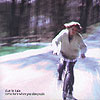 The next wave of laptop musicians appear to be providing a little more of the human element in their work by taking their faces from the blue glow of their displays and putting them in front of a microphone. Not only does this literally breathe new life into the genre, but also makes for the possibility of more interesting live performances. As Clue to Kalo, Australian laptop artist/producer Mark Mitchell blends his vocal and other musical abilities with his programming skills to give an hour's worth of complex electronic-pop compositions over the ten tracks on Come Here When You Sleepwalk.
The next wave of laptop musicians appear to be providing a little more of the human element in their work by taking their faces from the blue glow of their displays and putting them in front of a microphone. Not only does this literally breathe new life into the genre, but also makes for the possibility of more interesting live performances. As Clue to Kalo, Australian laptop artist/producer Mark Mitchell blends his vocal and other musical abilities with his programming skills to give an hour's worth of complex electronic-pop compositions over the ten tracks on Come Here When You Sleepwalk.
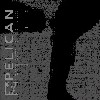 A growing number of new bands are embracing the characteristics and conventions of heavy metal in their quest for tense, dramatic post-rock instrumentalism. Pelican are a new instrumental group from Chicago, and this untitled EP on Hydra Head is their first release. The EP is quite promising, filled to the brim with big, crunchy heroic power chords and melodic riffs. The sound is not far from bands such as Explosions in the Sky or The Fucking Champs, but without all of the slow-burn atmospheric filler.
A growing number of new bands are embracing the characteristics and conventions of heavy metal in their quest for tense, dramatic post-rock instrumentalism. Pelican are a new instrumental group from Chicago, and this untitled EP on Hydra Head is their first release. The EP is quite promising, filled to the brim with big, crunchy heroic power chords and melodic riffs. The sound is not far from bands such as Explosions in the Sky or The Fucking Champs, but without all of the slow-burn atmospheric filler.
 When worlds collide, and cultures butt up against each other, theresult is not always confused or destructive. Natacha Atlas lives up toher name, born in Brussels of Egyptian and Moroccan decent, she spenther formative years skipping through Europe, the Middle East, and theUnited States, a journey that clearly left its mark on her life andmusic. Something Dangerousis a gently schizophrenic album, mixing the influences of UK dance,hip-hop, R&B, traditional Arabic, and Hindi pop to create afascinating amalgam. Atlas enlists a number of guest vocalists to duetwith who bring even more color to the music. "Janamaan" features Atlasin a Bollywood-style trading with a male vocalist against a glitchytechno backbeat. Her voice is powerful, full of depth and body thatenraptures as it climbs and descends her words, whether in her lyricalArabic or English. "Eye of the Duck" is a funky, reggae number withNatacha's sampled cooing and Arabic interplay flanking the distinctiveJamaican delivery and flow. "It's when we touch (ooh) / It's when wekiss (ooh)." Sure, it's not too complex, but that's the beauty. It's aperfect club track, simple, sexy, and superb. "Simple Heart" findsNatacha in a duet with Sinead O'Connor, whose contribution is nothingspecial. The track would have worked fine as a solo piece, as Atlas'vocals are attention-demanding while O'Connor's role in the song isrelegated to the background. "Who's My Baby" achieves an almost totalelectronic soundscape that sounds akin to Kylie Minogue, with a snakybass line that pulses around Niara Scarlett's English sung vocals. Onher last solo album, Ayeshteni, Atlas covered Screamin' JayHawkins' "I Put a Spell on You," and here she continues her homage toAmerican rhythm and blues with a slick cover of James Brown's "It's aMan's Man's Man's World." It's all her, on her own, delicately swayingthrough the English lyrics with ease, occasionally slipping into a lineof Arabic complete with vibrato and melisma that's as smooth as silk. Something Dangerousis a kaleidoscopic cross-cultural trip that brings the beauty of Atlas'traditional Arabic loves with the fresh sounds of the West in acreative and harmonious way. -
When worlds collide, and cultures butt up against each other, theresult is not always confused or destructive. Natacha Atlas lives up toher name, born in Brussels of Egyptian and Moroccan decent, she spenther formative years skipping through Europe, the Middle East, and theUnited States, a journey that clearly left its mark on her life andmusic. Something Dangerousis a gently schizophrenic album, mixing the influences of UK dance,hip-hop, R&B, traditional Arabic, and Hindi pop to create afascinating amalgam. Atlas enlists a number of guest vocalists to duetwith who bring even more color to the music. "Janamaan" features Atlasin a Bollywood-style trading with a male vocalist against a glitchytechno backbeat. Her voice is powerful, full of depth and body thatenraptures as it climbs and descends her words, whether in her lyricalArabic or English. "Eye of the Duck" is a funky, reggae number withNatacha's sampled cooing and Arabic interplay flanking the distinctiveJamaican delivery and flow. "It's when we touch (ooh) / It's when wekiss (ooh)." Sure, it's not too complex, but that's the beauty. It's aperfect club track, simple, sexy, and superb. "Simple Heart" findsNatacha in a duet with Sinead O'Connor, whose contribution is nothingspecial. The track would have worked fine as a solo piece, as Atlas'vocals are attention-demanding while O'Connor's role in the song isrelegated to the background. "Who's My Baby" achieves an almost totalelectronic soundscape that sounds akin to Kylie Minogue, with a snakybass line that pulses around Niara Scarlett's English sung vocals. Onher last solo album, Ayeshteni, Atlas covered Screamin' JayHawkins' "I Put a Spell on You," and here she continues her homage toAmerican rhythm and blues with a slick cover of James Brown's "It's aMan's Man's Man's World." It's all her, on her own, delicately swayingthrough the English lyrics with ease, occasionally slipping into a lineof Arabic complete with vibrato and melisma that's as smooth as silk. Something Dangerousis a kaleidoscopic cross-cultural trip that brings the beauty of Atlas'traditional Arabic loves with the fresh sounds of the West in acreative and harmonious way. - 


